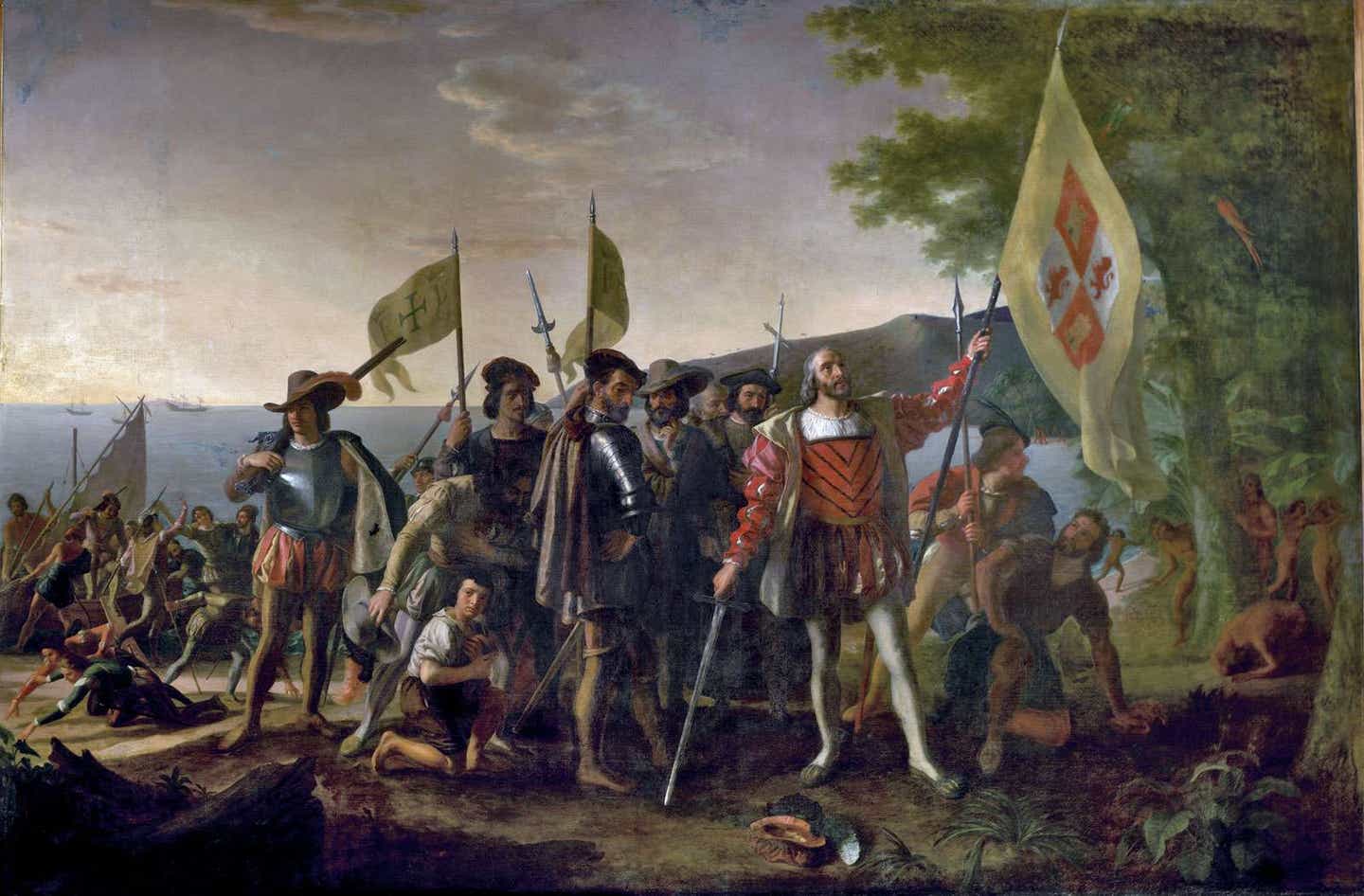Italian sailors knew of America 150 years before Christopher Columbus
Ahead of Columbus Day, findings pose further questions of what the explorer really expected to find on his voyage.

[Oct 8, 2021: TAYLOR & FRANCIS GROUP]
New analysis of ancient writings suggests that sailors from the Italian hometown of Christopher Columbus knew of America 150 years before its renowned ‘discovery’.
Transcribing and detailing a, circa, 1345 document by a Milanese friar, Galvaneus Flamma, Medieval Latin literature expert Professor Paolo Chiesa has made an “astonishing” discovery of an “exceptional” passage referring to an area we know today as North America.
According to Chiesa, the ancient essay – first discovered in 2013 – suggests that sailors from Genoa were already aware of this land, recognizable as ‘Markland’/ ‘Marckalada’ – mentioned by some Icelandic sources and identified by scholars as part of the Atlantic coast of North America (usually assumed to be Labrador or Newfoundland).
Published in the peer-reviewed journal Terrae Incognitae, the discovery comes ahead of Columbus Day 2021, alternatively celebrated as Indigenous Peoples’ Day across many states in the US. The findings add more fuel to the fire for the continuing question of ‘what, exactly, did Columbus expect to find when he set out across the ocean?’ and come following a period in which his statues have been beheaded, covered with red paint, lassoed around the head and pulled down, set on fire and thrown into a lake.
“We are in the presence of the first reference to the American continent, albeit in an embryonic form, in the Mediterranean area,” states Professor Chiesa, from the Department of Literary Studies, Philology and Linguistics at the University of Milan.
Galvaneus was a Dominican friar who lived in Milan and was connected to a family which held at the lordship of the city.
He wrote several literary works in Latin, mainly on historical subjects. His testimony is valuable for information on Milanese contemporary facts, about which he has first-hand knowledge.
Cronica universalis, which is analyzed here by Chiesa, is thought to be one of his later works – perhaps the last one – and was left unfinished and unperfected. It aims to detail the history of the whole world, from ‘Creation’ to when it was published.
In translating and analysing the document, Professor Chiesa demonstrates how Genoa would have been a “gateway” for news, and how Galvaneus appears to hear, informally, of seafarers’ rumours about lands to the extreme north-west for eventual commercial benefit – as well as information about Greenland, which he details accurately (for knowledge of the time).
“These rumours were too vague to find consistency in cartographic or scholarly representations,” the professor states, as he explains why Marckalada wasn’t classified as a new land at the time.
Regardless though, Chiesa states, Cronica universalis “brings unprecedented evidence to the speculation that news about the American continent, derived from Nordic sources, circulated in Italy one and half centuries before Columbus.”
He adds: “What makes the passage (about Marckalada) exceptional is its geographical provenance: not the Nordic area, as in the case of the other mentions, but northern Italy.
“The Marckalada described by Galvaneus is ‘rich in trees’, not unlike the wooded Markland of the Grœnlendinga Saga, and animals live there.
“These details could be standard, as distinctive of any good land; but they are not trivial, because the common feature of northern regions is to be bleak and barren, as actually Greenland is in Galvaneus’s account, or as Iceland is described by Adam of Bremen.”
Overall, Professor Chiesa says, we should “trust” Cronica universalis as throughout the document Galvaneus declares where he has heard of oral stories, and backs his claims with elements drawn from accounts (legendary or real) belonging to previous traditions on different lands, blended together and reassigned to a specific place.
“I do not see any reason to disbelieve him,” states Professor Chiesa, who adds, “it has long been noticed that the fourteenth-century portolan (nautical) charts drawn in Genoa and in Catalonia offer a more advanced geographical representation of the north, which could be achieved through direct contacts with those regions.
“These notions about the north-west are likely to have come to Genoa through the shipping routes to the British Isles and to the continental coasts of the North Sea.
“We have no evidence that Italian or Catalan seafarers ever reached Iceland or Greenland at that time, but they were certainly able to acquire from northern European merchant goods of that origin to be transported to the Mediterranean area.
“The marinarii mentioned by Galvaneus can fit into this dynamic: the Genoese might have brought back to their city scattered news about these lands, some real and some fanciful, that they heard in the northern harbors from Scottish, British, Danish, Norwegian sailors with whom they were trading.”
Cronica universalis, written in Latin, is still unpublished; however, an edition is planned, in the context of a scholarly and educational program promoted by the University of Milan.
For more science and technology stories check out our New Discoveries section at The Brighter Side of News.
Like these kind of feel good stories? Get the Brighter Side of News' newsletter.
Tags: #New_Discoveries, #Christopher_Columbus, #North_America, #Italian_Sailors, #Science, #Research, #The_Brighter_Side_of_News
Joseph Shavit
Head Science News Writer | Communicating Innovation & Discovery
Based in Los Angeles, Joseph Shavit is an accomplished science journalist, head science news writer and co-founder at The Brighter Side of News, where he translates cutting-edge discoveries into compelling stories for a broad audience. With a strong background spanning science, business, product management, media leadership, and entrepreneurship, Joseph brings a unique perspective to science communication. His expertise allows him to uncover the intersection of technological advancements and market potential, shedding light on how groundbreaking research evolves into transformative products and industries.



